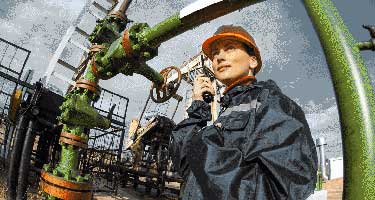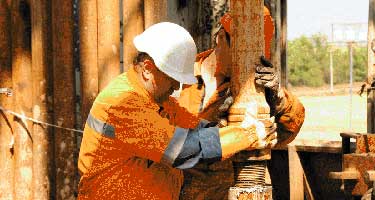What is HAZOP Analysis?
Reducing workplace hazards as much as possible ensures the health and well-being of your employees, and also prevents the costly repairs, lawsuits, and lost reputation that can come from a safety-related incident. One of the key methods of proactive hazard control is Process Hazard Analysis (PHA). In fact, OSHA finds PHA to be such an important step that it’s required as part of their standards. This article covers one of the components of PHA, Hazard & Operability Analysis (HAZOP) and digital templates you can use for your organization.
What is HAZOP?
Identifying risks means taking a systematic look at the way processes and operations work – both the way they are intended to work and the ways in which they work in practice. A Hazard & Operability Analysis is one way of doing that. During a HAZOP study, your team will break down the process or operation into smaller segments and examine each one for potential hazards.
The goal of a HAZOP is to discover design and engineering issues that may lead to hazards. These issues are often overlooked during an initial design phase because everything is assumed to go according to plan. By bringing in a multi-disciplinary team, a broader view of the process can be had. Unintended ways in which the process or operation may be performed can be found, and any hidden hazards discovered before they have a chance to cause a catastrophe.
To understand the concept better, let’s take a look at a simple example. Imagine you have some complex process. Your HAZOP team has broken that process down into many tiny portions, called nodes. Imagine further that one of those nodes involves pumping coolant from a storage tank to a piece of machinery. The team would then identify all the ways in which this process may go wrong. For example:
- Perhaps the pump stops pumping. What hazards does an overheating machine cause?
- Maybe the pipe carrying the coolant bursts. Will the escaping coolant burn someone?
These types of questions are asked and answered about every aspect, or node, of the process.
Who should be a part of a HAZOP analysis?
Picking the right people for a HAZOP team is extremely important. In fact, if you pick the wrong people, you may be better off doing no HAZOP analysis at all. The purpose of a HAZOP study is to provide your staff with peace of mind regarding the safety of the process and operations they engage in. Further, HAZOP analysis provides the groundwork for preparing employees for dealing with the potential hazards that are discovered. If the staff performing the HAZOP is incomplete, or isn’t qualified, then everyone will be ill-prepared for potential hazards and have a false sense of security while on the job.
Therefore, it’s important that the team you assemble to conduct a HAZOP study is well-qualified in their particular area of expertise. However, it’s equally important that you bring in people from a variety of disciplines. The strength of a HAZOP study comes from being able to view the process outside of the bounds in which it was designed. This requires as many perspectives as possible.
How do you perform a HAZOP study?
Once you’ve assembled your team and determined which process or operation they’ll be conducting their HAZOP study on, the process itself is straightforward and highly systematic. The team should conduct their study by following the six steps listed below:
1. Identify nodes
Each part of the system should be broken down into the smallest possible component. Each of these components, or nodes, should then be examined individually. Performing the study in this way ensures that all aspects of the system will get a thorough review.
2. Use guide words to identify deviations
Guide words are the heart of a HAZOP study. For each of the guide words listed below, think of how it may apply to the node of the process being studied. In order to do this effectively, the parameters of the node should be determined and compared to the list of guide words. Custom guide words may be developed as the team sees fit.
- No or not – Something is not happening that should be.
- More – There is more of something than there should be.
- Less – There is less of something than there should be.
- As well as – Something else is happening in addition to the intended design: Oil as well as impurities.
- Part of – Only part of the process is operating as expected.
- Reverse – A process is behaving opposite of what is expected.
- Other than – A substitution has occurred: Something other than oil in the system.
- Early – A part of the process arrives or finishes early.
- Late – A part of the process arrives or finishes late.
- Before – A part of the process arrives or finishes before another one.
- After – A part of the process arrives or finishes after another one.
3. Identify the causes of those deviations
By applying the guide words to all of the parameters of a node of operations, your team will have identified the ways the parameters may be off. Now, they must brainstorm to determine all of the conditions that could lead to these parameters behaving incorrectly. By doing so, they’ll have identified many of the ways that hazards can develop.
4. Determine the consequences
For each of the causes in the previous step, the team should figure out what the consequences of those causes are. This is an important part of determining exactly what safety hazards are presented by the problems.
5. Identify safeguards
For any consequence that presents a safety hazard, the team should determine a list of safeguards that can help prevent that hazard from occurring. Additionally, they should come up with a procedure for dealing with those consequences should preventing them not work.
6. Provide safety recommendations
Finally, the team should assemble a list of safety recommendations based on the safeguards and mitigation procedures that they developed in the last step. This will give management the tools they need to make informed decisions about what changes need to be made to the processes, operations, and training surrounding them.
Using software for safety and risk management
Using paper forms is time-consuming, error prone, and makes it difficult to quickly distribute the results to everyone who needs them. Companies are going digital with their operations, leveraging tools like GoCanvas Safety that is built to meet the complex needs of hazard management. Data entered into the mobile app becomes immediately available and can be presented in an easy-to-understand dashboard. The software allows you to examine key metrics from the data to determine trends and gain insights that will let you find and address hazards more quickly. By digitizing your safety management programs, you help ensure that your business stays compliant with rules and regulations in your industry.
Simplify Hazard Analysis with GoCanvas
Built-in to GoCanvas Safety is a set of templates that will make your hazard identification studies more streamlined and thorough than ever before. This includes not only templates for HAZOP, but for a wide range of hazard identification use cases. These tools and templates make specialized hazard and safety software a must-have for any operation that wants to maximize its hazard-reduction efforts. Follow this link to access the HAZOP form template and get started today with a free trial of GoCanvas to see how it works.

Stay in Touch!
About GoCanvas
GoCanvas® is on a mission to simplify inspections and maximize compliance. Our intuitive platform takes care of the administrative tasks, freeing our customers to focus on what truly matters – safeguarding their people, protecting their equipment, and delivering exceptional quality to their customers.
Since 2008, thousands of companies have chosen GoCanvas as their go-to partner for seamless field operations.

Check out even more resources

Manage Risk for Oil and Gas Companies With a Risk Assessment Checklist
Today, the challenges faced by the oil and gas industry are considerable. Effective business leaders and managers must thoroughly understand them to determine…

Solutions to Waste Management Issues For Oil & Gas Companies
Waste management compliance is important in every industry. The oil and gas industry, in particular, has a strong risk of waste emissions…

4 Ways Big Data is Transforming Oil and Gas
Oil and gas companies are getting smart about using the data they collect to gain insights and manage people, equipment, and worksites more effectively…